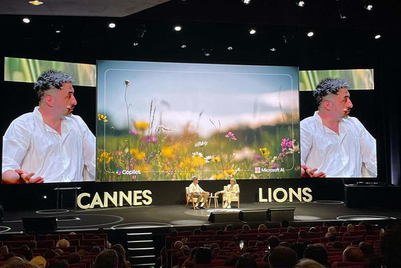
Online adspend in Japan is expected to total more than US$11 billion next year, according to PricewaterhouseCoopers. By 2017 that figure is expected to grow to nearly $13 billion, while TV adspend is estimated to grow moderately to $18.5 billion. Online TV in particular is expected to grow by 94 per cent between now and 2017.
Hakuhodo's PR department declined to comment yesterday on the decision by Japanese TV broadcasters not to air a commercial for Panasonic’s Smart VIERA connected TV product. Observers have suggested that the TV companies fear the impact that smart TV is likely to have on their advertising revenues. Decreased spend on TV would have a knock-on effect for Japanese advertising agencies, which still rely on TV buying for the bulk of their revenues. Given the ban on its TV commercial, Panasonic has generated awareness of its product predominantly online.
However, last month, Mikami denied that increased interest by marketers in less lucrative online platforms was a threat. “It’s not about shifting one to the other, but about how to effectively integrate the two,” he said.
He pointed to a need for “second screen experimentation”. Kokoku Plus, developed by Hakuhodo, he said, aimed to deepen viewer engagement with TV advertising via the smartphone.
“Everyone asks [if budgets are shifting],” he continued. “I don’t care. The important thing is to create good engagement with consumers and revitalise traditional media by using new technology platforms.”
Mikami admitted that marketers in certain sectors are considering allocating most of their budgets to mobile platforms. “That’s fine,” he said. “But most—the biggest—advertisers, are thinking about integration, not just shifting.” He added that a common factor among the entries to the Media category at the Cannes Lions International Festival of Creativity, which he judged, was the successful integration of paid, owned and earned media.
He noted that online accounts for up to 20 per cent of total marketing spend in the US, but still just four per cent in Japan. “We expect it to increase,” he said. “The question is, will there be a shift? Or will it be pure growth—additional marketing budget? With digital able to integrate the full funnel of the communications process, there are huge opportunities for marketers and agencies.”
Mikami pointed to mobile as the fastest-growing area and the platform with the greatest potential to unite online and more traditional advertising platforms. Whereas two years ago just five per cent of the Japanese population owned a smartphone (as opposed to an advanced feature phone), today nearly 46 per cent do, he said.
“No serious marketers think of the feature phone platform as effective any more,” he said. “Smartphones are potentially the most important platform, but no marketers have successfully found out the formula [of how to use that platform].”
He said that persuading marketers of mobile’s effectiveness as a brand-communications platform is still a challenge and that more formats and platforms are needed to attract them. He described the mobile platform in general as “more transactional” and said he does not believe branded content on a smartphone is as effective as on TV or outdoor.
Hakuhodo’s aim in developing platforms such as Grabee, he said, is to enable marketers to track the behaviour of their target consumers via mobile and integrate TV content with offers or branded communications.
As a standalone mobile platform, messaging platforms like Line, he said, still have “enormous potential” for marketers. “Most consumers love characters,” he observed. “Most marketers are [also] comfortable integrating their brands into that platform as it makes communications with consumers much easier and smoother.”


.jpg&h=334&w=500&q=100&v=20250320&c=1)



.png&h=334&w=500&q=100&v=20250320&c=1)



.png&h=334&w=500&q=100&v=20250320&c=1)




.jpg&h=268&w=401&q=100&v=20250320&c=1)
.png&h=268&w=401&q=100&v=20250320&c=1)
.png&h=268&w=401&q=100&v=20250320&c=1)

